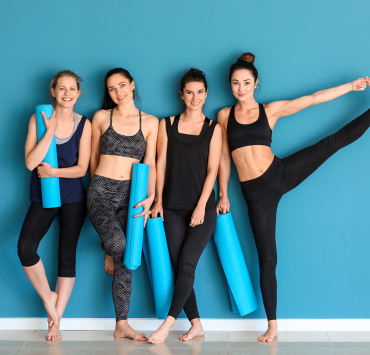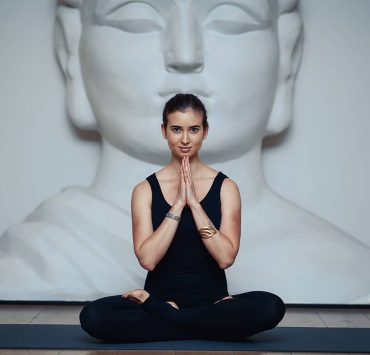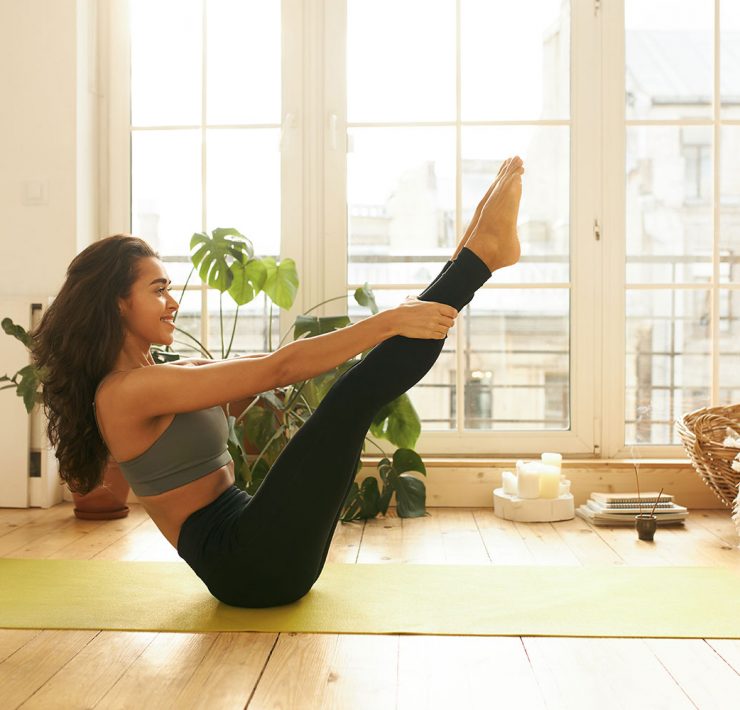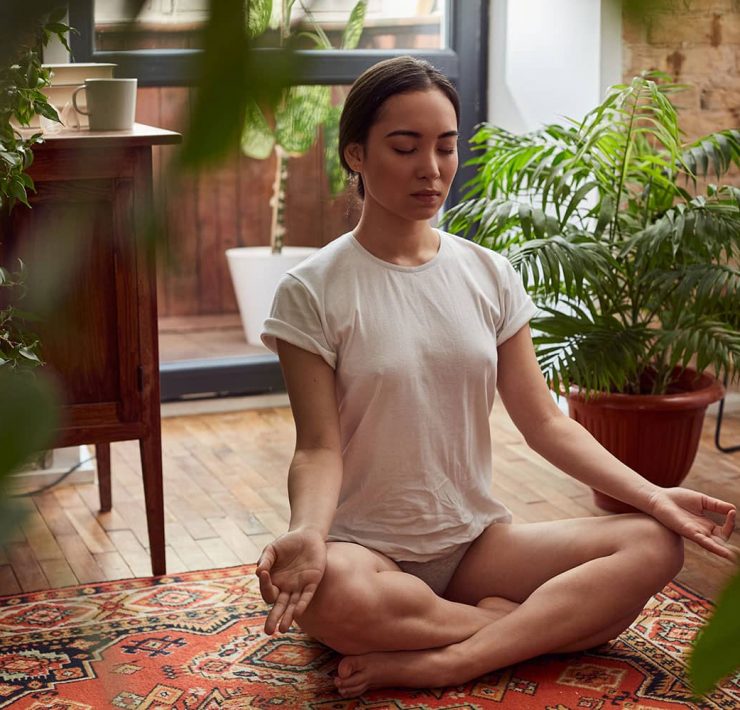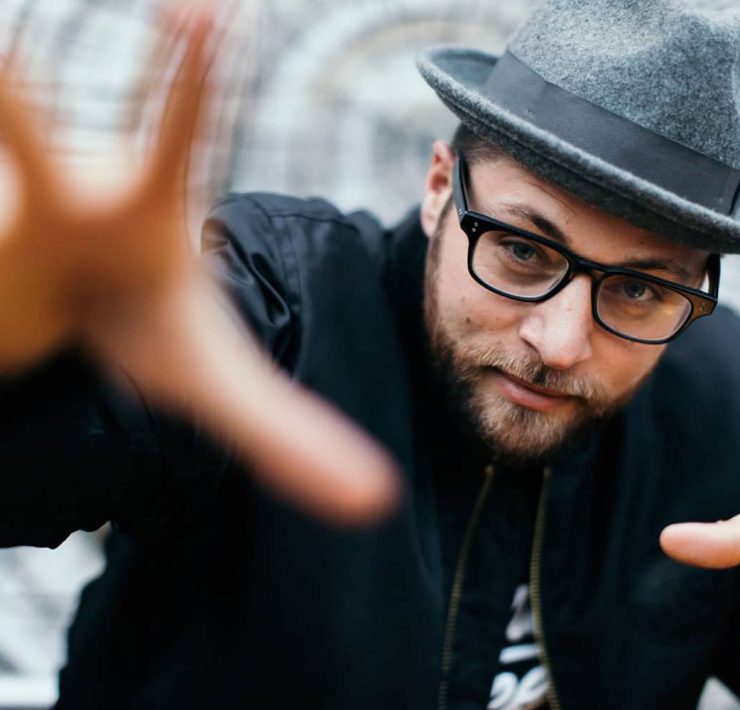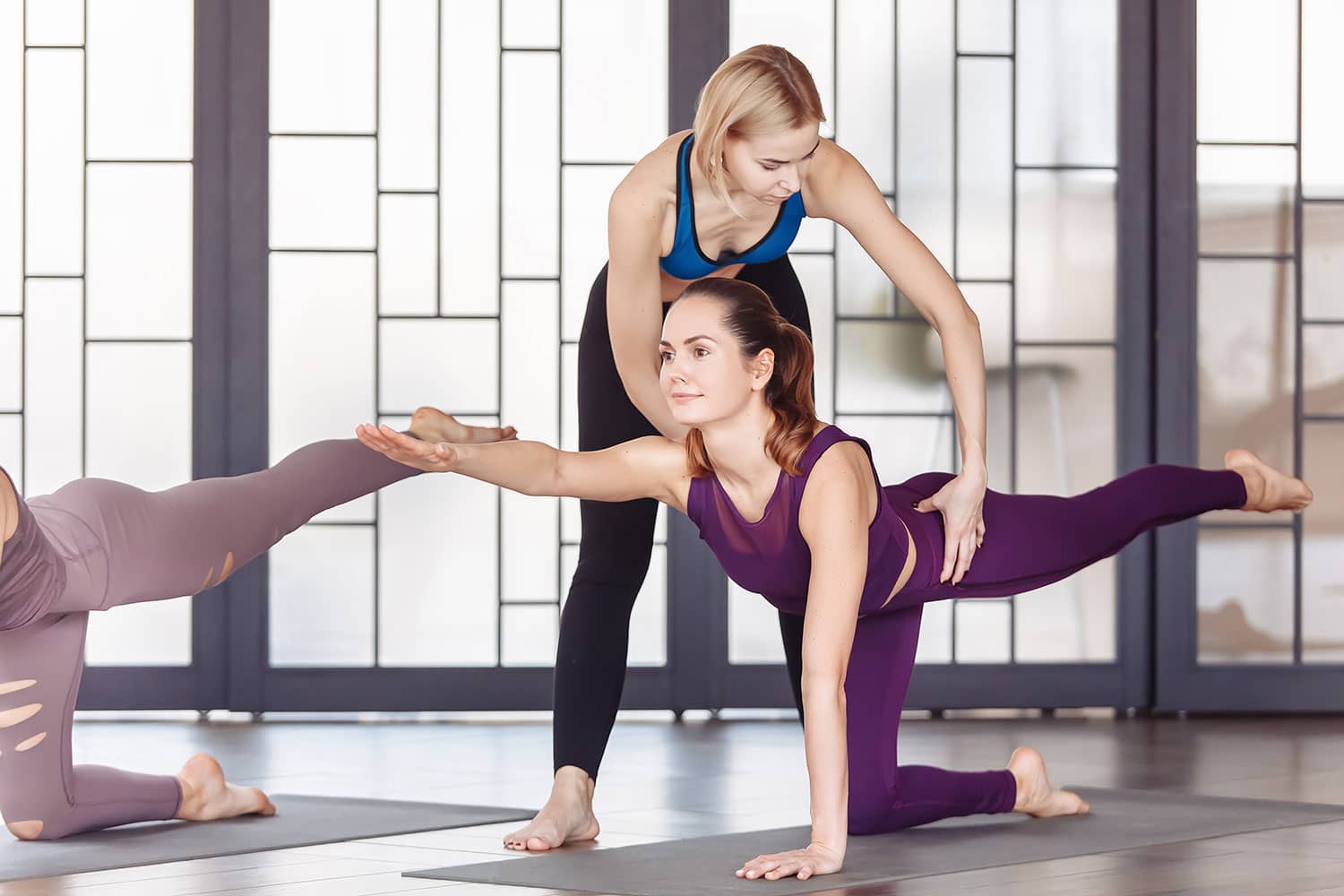
Lauren Howard holds a master certification in reiki, or energy…
As avid yoga students or practitioners, we are already well aware of the benefits of yoga. Especially, for individuals who have experiences with a mental block or with a deep-rooted obstacle, they’re looking to conquer. However, students who have endured some sort of trauma come from a very different and very vulnerable place.
That is why it’s important that individuals who experience trauma aren’t just told to try a yoga class but to take a class that better suits their needs. A trauma-informed yoga practitioner equips themselves with the knowledge and language to work with these students. If you’re looking into teaching trauma-informed yoga, here are some considerations to take into account.
What Is Trauma?

Trauma is defined as “a deeply disturbing experience that makes it difficult for an individual to cope.” These sort of experiences could be from:
- A parent not being there for their child emotionally or physically
- Racism or hate (among other forms of discrimination)
- Physical injury or a chronic illness
- Loss of a loved one through death or a divorce
- Addiction issues
- Emotional abuse
As the definition is broad it’s important to recognize that trauma means different things to different people and it’s severity can also be more severe in one person than another.
10 Recommendations For Teaching Trauma-Informed Yoga
1. Communicate

The best way to help students is by finding out their preferences; what do they want? It can be as simple as leaving the doors or windows open or changing up the type of music you generally play. These small differences in your practice can help students develop a deeper reflection. Once removing these distractions, they can open themselves up to what really matters.
In doing this, make sure to not ask what happened to them in their past. Although it may seem helpful to know what their triggers are, this practice is about making them feel safe. In this setting, it is inappropriate to dig deeper than what the classroom requires. Here, they can show up and confront what they need and leave what they don’t.
2. Avoid Assists

Trauma can come in many forms. Some people may have experienced someone harming or taking advantage of their bodily autonomy. In this classroom setting, it is difficult to know what each student has experienced and may not feel comfortable. Avoid maneuvering or touching their bodies at all and enable them to have full control of their boundaries.
If you feel it is too difficult to refrain from assisting in maneuvering, ask for permission. This will give control back to your student and they have the opportunity to decline. Try expressing to your students that declining assists is not taken personally and that you are there for their encouragement. Knowing that their teacher is helping to meet them in a safe place emotionally, will help them open up and have the opportunity to change their minds for assistance when they feel more comfortable. In either case, the most important component is meeting them where they see fit. That may look very different for each student.
3. Remain Stationary

To remain stationary is something that feels foreign to us, teachers. You’re encouraged to move around and help students reach deeper into their stretches. Yet, some students may find themselves practicing and feeling exposed as you walk around the room. Since this yoga is working with a very specific group of people that need to work through the class at their pace in their space.
Also, as you’re practicing to limit or avoid physical assists that make a demonstration that much more important. By remaining stationary, you’re staying a constant focus for them to refer to. This is a safe, reliable focus for them and is safer, than assisting.
4. Practice Grounding

As energy is flowing through us, it’s common for emotions to come up. Your students may experience things that they’re not exactly sure how to communicate – and that’s okay. If your student appears distressed, try bringing them back into the present. Have them practice the 5-4-3-2-1 grounding method. Psychologists often use this method to help their clients ward off anxiety attacks. It starts like this:
5 – Have your students (to themselves) name five things they can see
4– Have your students (to themselves) name four things they can feel
3– Have your students (to themselves) name three things they can hear
2– Have your students (to themselves) name two things they can smell
1 – Have your students (to themselves) name one thing they can taste. As naming something you taste may be difficult in this setting there are some methods that have clients say what they like about themselves. Choose which one aligns most with your practice.
These actions can help our students calm their minds and focus on their surroundings. They will be less inclined to focus on their sudden thoughts and will slow their heart rate, breathing, and make the student feel more composed.
5. Own Your Role

As healing practitioners, we play an important part in their care but we’re only a part of their journey. That is why it’s important that we serve our students as that singular part of their journey to the best of our ability. By doing that, it also means that we don’t step out of our own boundaries of our responsibility or position. If you have a student that appears to be struggling, or an individual that appears to need more assistance, this is not something to take on yourself.
There are a variety of reasons why this would be detrimental to the client but also to yourself. If you wish to help by offering resources, have them find a therapist online or locally. But, it is important that a trained therapist works with them as they’re equipped with the technique and language to best serve them. Stick with what you know and do it well. We’re serving our students in the best way we can.
6. Keep Eyes Open
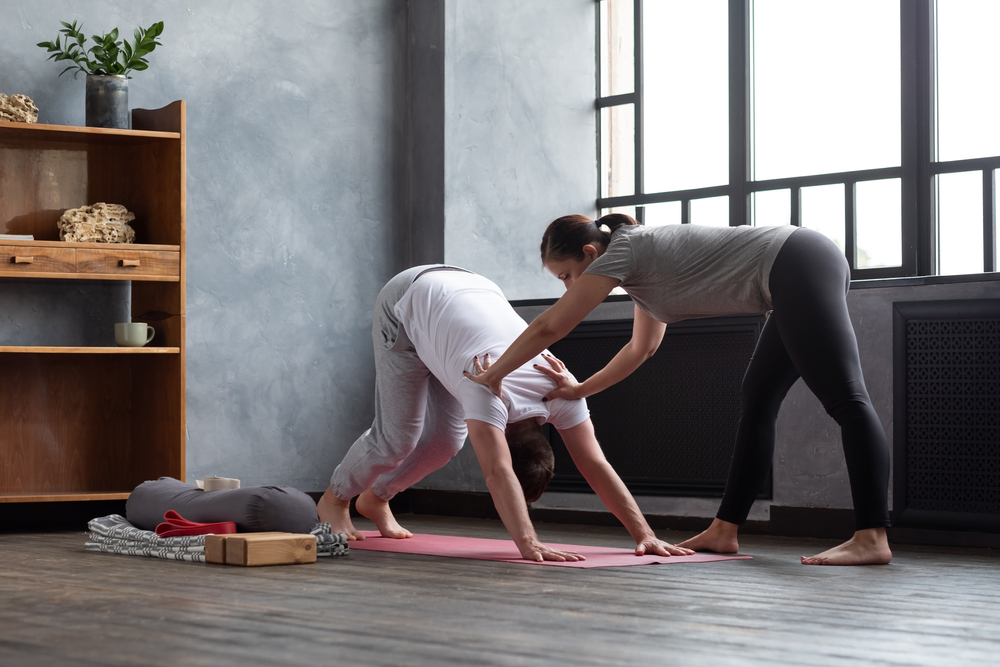
This is another aspect of trauma-informed yoga that seems contrary. Closing eyes is essential to yoga to prepare us for meditation and to feel in-tune with ourselves. Yet, for our students, this can often make them feel uncomfortable depending on their personal backgrounds.
Because of this, consider moving through poses and asanas with eyes open with the option of closing. Whether students decide to remain fixated on a specific point or to close their eyes, it’s their choice. Creating a space where they know their choice is met with respect is everything in this sort of practice.
7. Poses Impact People Differently

No two poses are the same for any two people and don’t be too hard on yourself here. It’s difficult to remind ourselves that our language isn’t applicable to everyone. For some asanas, we may say, “this posture alleviates anxiety”, yet, for some students, this may not be the case. This causes our language to be interpreted very differently from our students. But, there is a very easy way to make these adjustments. For instance, try saying “this posture may alleviate anxiety.” This helps to give the same language but be more inclusive and meet your students in the space that they’re in without telling them how they should feel.
8. Review Protocol Often

This may seem tedious but in this field it’s necessary. As practitioners, there is trust in how we present ourselves in a classroom that helps a student determine if they feel it is safe. As that is the primary goal, it’s crucial that we make every effort to achieve, if not exceed, those expectations. The protocol can become our sidekick.
These topics can help us review to not push others over the edge, identify the difference in pain tolerance, and the protocol when someone needs to step out of the classroom. These protocols help practitioners create a safe space that embraces inclusivity. In a classroom like this, we mustn’t abide by the typical rules and must make special accommodations when someone needs to step out. Even when a new student comes on board, read through the protocols to ensure that nothing is missed.
9. Praise Progress
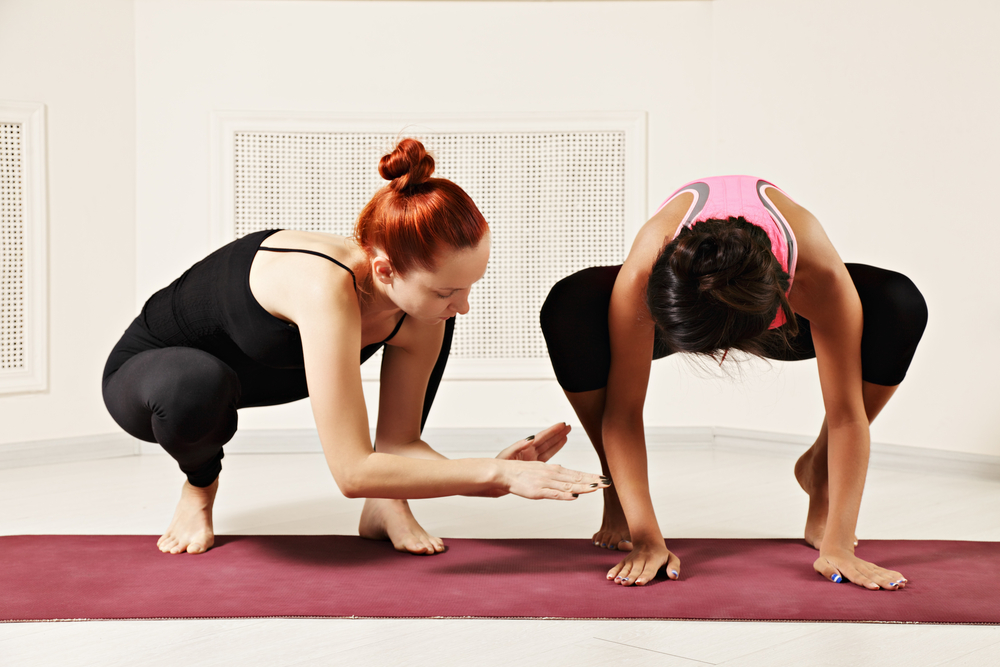
Some students may feel that taking a class like this is already too much. In fact, walking into the door may be a little challenging because they know they will be working through their emotions. This is some scary stuff for people and we mustn’t take that lightly. Bring assurance into the classroom and help your students recognize that it isn’t about some sort of unsaid competition. This is about your students, as the individuals they are.
Try expressing statements to your classroom to help them understand it’s about their own individual progress. This will look different for everyone, and that’s exactly how it’s supposed to look. We welcome and encourage them at their comfort level and we praise that progress, however small.
10. Be Mindful Of Guided Meditations
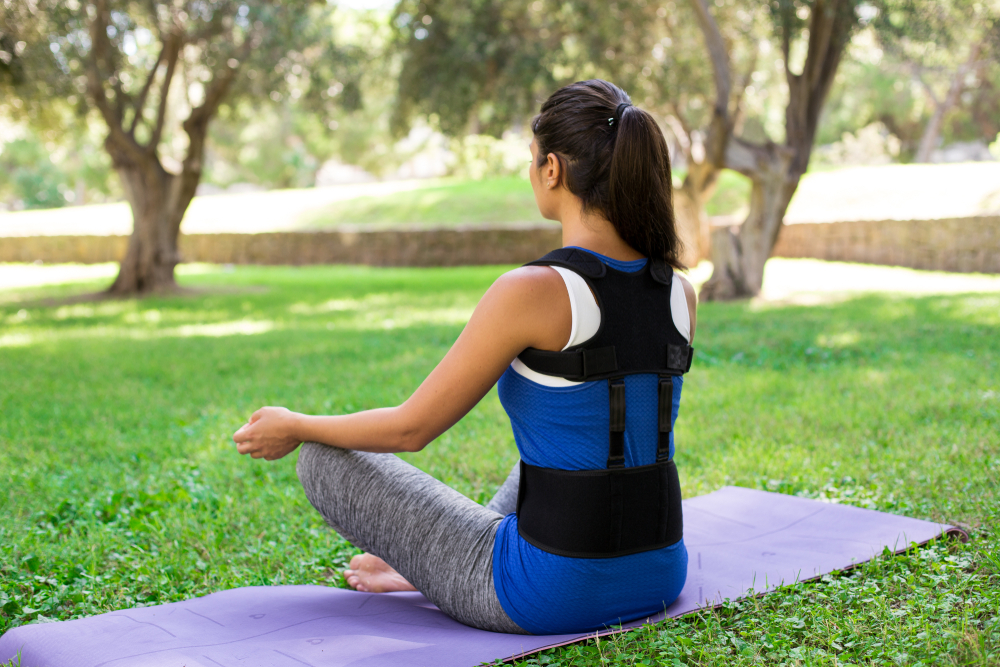
Yoga practitioners and therapists often include a type of visual imagery during asanas to help guide their students. This can often be a retreat for our minds to go to a comfortable place. However, for our clients, they may not have the same luxury. A comfortable place for them may trigger emotions. Be aware of what language you use during these meditations as this may bring upset to its imagery.
When introducing this into your practice you may want to give the option for students who don’t feel comfortable to choose not to do the meditation. Another way may be to encourage your students to embrace the present. This varies according to the classroom, but it’s worth noting to our practitioners to be mindful of what language you choose as it may not resonate the same for everyone.
Lastly, we ask our practitioners to remember that this isn’t a perfect science. If an individual has something come up for them it isn’t at the fault of something you did or an error with the space you created. Students are coming to these classrooms with very specific and personal traumas that there is no way that anyone could know how to handle all. The important thing to take away from any of this is patience.
Not only with the students but also with ourselves. Know that going into this sort of practice, people will experience emotions or instances that are very triggering. It’s inevitable in this field, and potentially whatever triggered them will happen outside of your classroom too. But, the difference and what is important, is how we handle this event.
Knowing that the space they’re in, at this moment, meets them in the space that they are with encouragement and support is what they need. Learn from your mistakes, take them as lessons, and know moving forward that you’re helping people in a vulnerable place that are grateful for your efforts.
What's Your Reaction?
Lauren Howard holds a master certification in reiki, or energy healing, and has been practicing yoga for over 20 years. She began freelance writing as a means of spreading her truth and knowledge with a broader audience.






